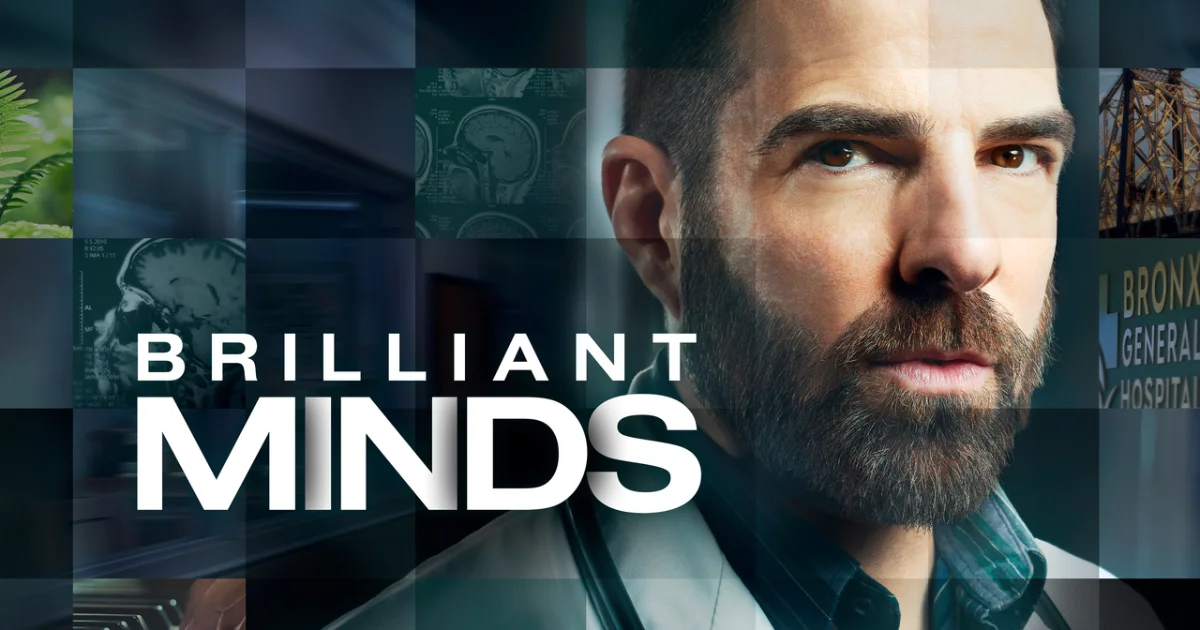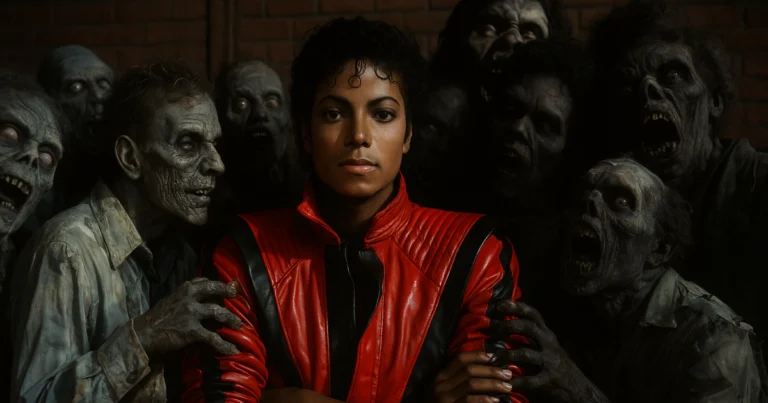When Science Becomes Story: Exploring the World of Brilliant Minds
The NBC series Brilliant Minds, created by Michael Grassi and first aired on September 23, 2024, immerses viewers in the fascinating world of neurology and human psychology. Drawing inspiration from the works of neurologist Oliver Sacks, especially The Man Who Mistook His Wife for a Hat, this medical drama breaks new ground by exploring complex neurological cases while bringing depth to the lives of medical professionals.
In this article, we delve into the very heart of the first episode to analyze how its cinematic choices intertwine with neurological and psychological aspects, creating an experience that is both informative and artistically moving. We will see how the show explains intricate concepts such as Capgras syndrome and prosopagnosia, and how it resonates with universal themes of empathy and resilience.
Crafting the vision: direction and cinematic style
The first episode opens with a memorable introduction that immediately commands the viewer’s attention. Dr. Oliver Wolf helps a patient with Alzheimer’s disease sneak out of the hospital to attend his granddaughter’s wedding. During the event, an intensely emotional scene unfolds: Dr. Wolf sits the elderly man at a piano, and suddenly his fingers instinctively find the keys. In that magical moment, a fleeting spark of memory returns, highlighting the powerful emotional effect of music. This sequence is a true artistic triumph, illustrating how fragments of memory can survive despite the ravages of the illness, and it offers a captivating, poignant beginning to the series.
The directing in this initial episode is remarkable in how it draws viewers into the altered perceptions of the characters. Consider the scene in which Hannah Peters, who suffers from Capgras syndrome, revisits her childhood home, bathed in warm tones. This choice in lighting is not mere nostalgia; it serves a specific purpose: to emphasize the artificiality of the scene. We even see stage lights illuminating the house, a bold decision that reflects Hannah’s neurological condition. It illustrates that, in her mind, these memories are not genuine but constructed, underscoring the complexity of Capgras syndrome.
Tight camera angles and abrupt transitions further immerse us in Hannah’s mental state. Similarly, the hospital’s cool color palette contrasts sharply with her artificially lit memories, conveying the emotional chasm she feels between her past and her present.
Dr. Oliver wolf: A brilliant mind with a hidden past
Zachary Quinto delivers a masterful portrayal of Dr. Oliver Wolf, a brilliant yet vulnerable neurologist whose character is shaped by a painful past that reveals his deeper motivations. Through flashbacks, we learn that Dr. Wolf’s father suffered from a neurological illness that was never properly diagnosed. This inability to understand or treat his father’s condition led to a family catastrophe, leaving an indelible mark on Wolf. His choice to specialize in neuropsychology stems from this personal tragedy, driven by a desire to prevent similar fates for other families.
Although weakened by his illness, his father made a lasting impact by helping Wolf cope with his prosopagnosia. He taught him to associate each individual with a distinctive detail—a voice, a gesture, or a unique accessory. This inventive system, born of patient and loving care, enabled Wolf to work around his disorder and form genuine connections. It remains a cornerstone of his professional and personal resilience.
This personal history echoes through his interactions with patients. His prosopagnosia, which prevents him from recognizing faces, is not just a character quirk; it shapes his relationships and uniquely connects him to his patients. In one memorable scene, we see him struggle to memorize the features of his colleagues using non-visual cues, a subtle detail that makes his character all the more human.
The young actors playing the interns also bring a welcome energy. Their dynamic with Wolf, often a mix of awe and misunderstanding, enriches the narrative and highlights the human side of the doctor.
A closer look at the brain: unpacking complex neurological themes
seeing strangers in loved ones: A look into Capgras
Capgras syndrome is a rare, complex neurological disorder first identified in 1923 by French psychiatrist Joseph Capgras and his colleague Jean Reboul-Lachaux. Their initial report described a patient who believed several close family members had been replaced by identical but malicious doubles. This condition is often linked to disruptions in the connections between the brain’s cognitive and emotional centers—particularly between the visual cortex and the limbic system—creating a split between recognition and emotional response.
In the episode, Hannah experiences this profound dilemma: she recognizes her children visually but is convinced they are not real, an unsettling and painful perception. This portrayal highlights the psychological and social toll of Capgras syndrome, which can distance patients from those closest to them.
Prosopagnosia exposed: The challenge of face blindness
Dr. Wolf embodies another intriguing neurological condition: prosopagnosia, sometimes known as “face blindness.” It was first documented in 1947 by German neurologist Joachim Bodamer, who introduced the term in his article “Die Prosop-Agnosie,” published in a medical journal. Bodamer’s paper discussed three patients who, following brain injuries, were unable to recognize faces despite being able to identify other objects without difficulty. This disorder frequently involves damage to the fusiform face area, a critical region for perceiving and recognizing faces.
In Brilliant Minds, Wolf’s prosopagnosia not only poses a personal challenge but also drives the narrative by showcasing his coping techniques. To make up for his inability, he assigns each individual a set of unique features—perhaps a distinct voice, a particular scent, or a habitual accessory. His father introduced him to this strategy in childhood, demonstrating remarkable resilience and ingenuity.
Beyond practical adaptation, Wolf’s prosopagnosia generates a constant tension in the series. Although he excels at unraveling the mind’s intricate processes, his own condition forces him into continual vulnerability. This duality lends emotional and psychological depth to his character, making him both brilliant and profoundly human. In one poignant scene, we see him bonding with a patient by drawing on his own disability, forging a touching moment of mutual understanding.
The series also highlights the social and emotional impact of prosopagnosia. For Wolf, every interaction serves as a reminder that he could miss recognizing a friend or be perceived as aloof by those who do not know about his condition. This struggle underscores the vital role of adaptability and empathy in his relationships, both professionally and personally.
Where science meets empathy: rethinking patient-centered treatment
One of the greatest strengths of Brilliant Minds is its ability to explore complex ethical questions, examining the sometimes blurred boundaries between medical science and humanity. Dr. Oliver Wolf embodies this duality. Although his work is rooted in facts and data, he prefers a patient-centered approach that transcends standard protocols.
In Hannah’s case, a patient with Capgras syndrome, Dr. Wolf makes a bold decision: he postpones pharmacological treatment to establish an emotional connection first. By attentively listening to her fears and validating her subjective experience, he builds trust and fosters Hannah’s active involvement in her own treatment. This unconventional approach underscores a fundamental truth: caring for a patient involves more than just treating symptoms; it requires understanding and honoring each person’s unique perspective.
The series also prompts viewers to consider the ethical dilemmas that healthcare professionals face. How far should one go for a patient’s well-being? Early in the episode, Dr. Wolf bends hospital rules by enabling an Alzheimer’s patient to attend his granddaughter’s wedding. Although this decision clashes with medical protocol and leaves Wolf open to censure, it highlights the importance of respecting a patient’s dignity and desires, sometimes beyond standardized practices.
Another key aspect of humanizing medicine in the show is its emphasis on active listening. Patients are not just “cases” or “problems to be solved,” but complex individuals with stories, emotions, and needs. This approach also benefits the interns, who learn how to balance scientific rigor with genuine empathy, an essential lesson in becoming well-rounded physicians.
Finally, Brilliant Minds sheds light on the ongoing tension between technological advances in medicine and the ethical limits they impose. For instance, discussions on using neuroimaging to predict behavior or detect potential pathologies spark questions: Should these tools be used under all circumstances? Where do we draw the line between treatment and intruding on someone’s private life?
In conclusion, this ethical dimension is more than just background narrative; it is central to the show’s message. It reminds us that while medicine is backed by science, it is ultimately a deeply human discipline in which compassion and expertise must be in constant balance.
The first episode of Brilliant Minds brings together science and artistry to create a compelling and thought-provoking narrative. By presenting rare neurological disorders through both an artistic and a scientific lens, the show captivates as it educates. Striking a perfect balance between medical insight and human connection, this debut episode offers a glimpse of even richer explorations into the mysteries of the human mind.

Amine Lahhab
Television Director
Master’s Degree in Directing, École Supérieure de l’Audiovisuel (ESAV), University of Toulouse
Bachelor’s Degree in History, Hassan II University, Casablanca
DEUG in Philosophy, Hassan II University, Casablanca







